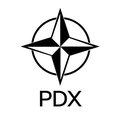What is Polygon?
Polygon is a decentralized Ethereum scaling platform that enables developers to build scalable user-friendly dApps with low transaction fees & high throughput without sacrificing security.
How does it stack up to other L1 chains?
Ethereum, a Layer 1 protocol, is the largest blockchain by Total Value Locked (TVL) which measures the amount of assets (in $ terms) deposited on a particular chain across various DeFi protocols. Scaling $ETH remains one of the key challenges to expanding crypto adoption since current transaction costs (gas fees), make it prohibitive for smaller investors to leverage the dApps deployed in the network. Ethereum has over 400 protocols on its chain, which are the framework/rules on which dApps (for example a Decentralized Exchange) operate.
In comparison, Polygon has the 6th largest TVL and hosts 254 protocols (the 3rd highest protocols of any chain). In terms of Marketcap/TVL, a method of price evaluation similar to EV/EBTIDA and P/E ratios, Polygon has a lower Mktcap/TVL ratio than all of the 5 leading chains with the exception of Avalanche ($AVAX).
How does Polygon help “scale” Ethereum?
There are 3 important facets to scaling Ethereum — 1) Transaction Costs (Gas Fees), 2) Throughput (the number of transactions processed per second — TPS), and 3) Security and Centralization tradeoffs from implementing 1 & 2.
These Ethereum enhancements can be implemented in various ways, of which 1) Sidechains, 2) Layer 2 (L2), and 3) Sharding, are the most well-known. Colloquially, sidechains are often referred to in the same breath as L2 solutions.
Polygon, known as the “swiss-army-knife” of Ethereum scaling, offers a suite of solutions that include its PoS sidechain and Layer-2 solutions (comprising Plasma/Validium, Optimistic Rollups, and Zero-Knowledge Rollups). Polygon competes in what has been described as the “blockchain-as-a-service industry” with competitors such as Starkware, Arbitrum, Loopring, and Matter Labs. However, no competitor boasts the same level of diversity (of solutions) and adoption as Polygon.
Polygon’s first product was a Proof-of-Stake sidechain that deploys many of Ethereum’s most popular DeFi platforms such as Aave, Curve, and Uniswap at a fraction of the gas costs required by Ethereum. In fact, Polygon’s side chain overtook Ethereum in daily transaction count in Q2 2021 and processed more than 4x the number of $ETH transactions at its peak.
This progress, though compelling in itself, is just a teaser for Polygon’s ambitions to provide further Layer 2 solutions which include zero-knowledge rollups and other hybrid scaling models that can be customized based on deployment needs. Polygon provides the following scaling solutions (some of which are in the testing phase) for Ethereum:
- Polygon Edge: An SDK (Software Development Kit), that allows you to build and deploy customizable & sovereign blockchains using plug-and-play modules.
- PoS Sidechain: Polygon’s flagship offering (discussed above) that allows developers to easily port over existing Ethereum dApps to Polygon’s cheaper sidechain.
- Polygon Avail: A data availability layer (similar to ETH’s data sharding proposal) that can be used by varying execution environments such as standalone chains, sidechains, and other off-chain scaling solutions.
- Polygon Hermez: Hermez is an EVM-compatible, decentralized zk rollup solution “optimized for secure, low cost, and usable token transfers.”
- Polygon Nightfall: Co-developed with Ernst & Young, Nightfall is an enterprise-focused ZK and Optimistic Rollup hybrid that aims to provide scalability and privacy for deployments such as supply chain management, private NFT marketplaces, and blockchain mixers.
- Polygon Miden: Miden is a STARK based general purpose zk-rollup with EVM capabilities. ZK-proofs come in two flavors, SNARKS and STARKS, with STARKS being more expensive but ultimately more secure and quantum-computing proof. Currently, most dApps opt for Optimistic Rollups since over 70% of dApps cannot be deployed on zk-rollups. Miden’s VM will be key to bringing dApps over to zk-rollup betworks.
- Polygon Zero: A zk-rollup utilizing Plonky2, the world’s fastest zk proving technology, that will enable proofs to be computed on devices such as personal laptops, and have huge implications for reducing transaction fees while maintaining security in a decentralized manner.
- Polygon ID: A suite comprising a wallet app, ID connection service, and comprehensive ID management useable for KYC compliance, social reputation systems, and private decentralized voting.
What’s Next?
Polygon’s vision and continued execution have attracted capital from heavy hitters in the industry such as Sequoia Capital, Andreeson Horowitz, Tiger Global, Union Square Ventures, and Galaxy Digital. Perhaps the only drawback thus far is that despite having an extremely comprehensive suite of L2 solutions, many of them have not been rolled out for general public use. As things stand, the TVL for Polygon’s native L2 solution Hermez per L2beat is only $374K (ranked 18th), compared to market leaders like Arbitrum (+$2 billion TVL), StarkWare’s DyDx ($944 million), and Optimism ($492 million). However, this figure ignores Polygon’s sidechain, and scaling solutions apart from Hermez. According to DeFi Lama, Polygon’s actual TVL across all solutions is over $3 billion. Using another metric — Transactions per second (TPS) — Polygon ranks 1st in the average gas-adjusted TPS for Ethereum sidechains, L2s, and rollups, on both weekly and monthly timeframes.
Moreover, Polygon’s ecosystem and the success of its sidechain mean that existing projects are incentivized to adopt and build on Polygon’s new offerings. To provide some context, as of April 26, 2022, over 19,000 dApps had been built on Polygon, up from only 3,000 in November 2021. Moreover, these dApps are not simply a port-over from Ethereum, and Alchemy data shows that 65% of the teams integrated exclusively on Polygon, compared to 35% deployed on Ethereum. The number of teams building on Polygon’s PoS chain has been doubling every 2 months. In addition to the sheer scale of development, some of the largest names in crypto are on Polygon’s PoS chain:
- DeFi: AAVE, Uniswap, Sushi, Curve Finance, 1inch, and QuickSwap
- NFT + Gaming: OpenSea, Atari, Decentraland, Sandbox, Gala Games, Animoca Brands.
- DAOs: Blockonomist, El Dorado, BlobDAO, Idavoll network.
- Wallets: Metamask, WalletConnect, Fortmatic, TokenPocket.
- Oracles: Umbrella Network, Certik, Chainlink.
- Dev Tools: Lossless, Validator, Hardhat, The Graph.
Polygon’s ability to attract the largest names in the NFTs and GameFi, a retail facing and rapidly expanding space, bodes well for continued adoption. Last year, Polygon announced the launch of Polygon Studio, and committed $100 million to gaming and NFT projects. Since then, well-known brands such as Draftkings, Dolce & Gabanna, and Adidas/Prada have announced NFT projects on Polygon. Polygon is no slouch in the gaming department either, with two of the largest metaverse plays — Decentraland and Sandbox — being deployed on its sidechain. ApeCoin, the governance token of BAYC, has also been now deployed on Polygon. Furthermore, the possible deployment of BAYC’s game Otherside on Polygon could result in a massive influx of new users. In fact, Polygon Co-Founder, Sandeep Nailwal estimated that 6/10 blockchain gaming projects are built on Polygon. Moreover, Polygon recently tapped Ryan Wyatts — ex-head of gaming at Youtube — to build out their gaming division.
Polygon has distinct advantages over its competition due to the scale and level of adoption achieved by its sidechain and the flexibility/diversity of its suite of Layer 2 scaling solutions. These advantages have already resulted in Polygon attracting the largest brand and project partnerships in the space and it continues to onboard news users at a rapid clip. Moreover, the diversity of its offerings, including enterprise-level solutions, have materialized in partnerships with companies such as Ernst & Young, and will likely lead to increased institutional and governmental adoption in the coming months. For example, Stripe recently announced that platforms and marketplaces powered by the company would be able to instantly pay their sellers, freelancers, content creators, and service providers on Polygon using the USDC stablecoin. Similarly, Lugano — a crypto-friendly city in Switzerland — partnered with Polygon to settle its stablecoin (Tether & LVGA) transactions.
The largest risk to Polygon is whether it will be able to successfully roll out and onboard users to its upcoming offerings many of which currently live on the testnet. However, if history is any guide, Polygon’s management has managed to outperform by consistently executing its roadmap while expanding the vision for what the company can be.












